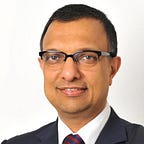Disease surveillance is key to strengthening the health care system
An op-ed by Raj Shankar Ghosh- Deputy Director, Vaccine Delivery and Infectious Diseases, and Nachiket Mor- Country Director, India at Bill & Melinda Gates Foundation
Diseases that afflict humanity are of multiple types. Some present as outbreaks, such as SARS in Hong Kong and Ebola in the Congo, that call for a rapid response, while others, such as hypertension and cancer require a more planned and sustained effort. To guide their responses, many countries have established formal disease surveillance systems, which Public Health England defines ‘as the systematic regular collection, analysis, interpretation, and dissemination of data for a given population to detect changes on patterns of disease or disease determinants with action taken if a predefined criteria or thresholds are met’.
Surveillance data are collected either passively, where institutions and facilities routinely feed health data into a pre-designed system, or actively, where specifically assigned health workers scan health records from various data sources, including health care facilities, laboratories, and pharmacies. In countries with strong primary care systems as United Kingdom, Brazil, Thailand, and Rwanda, passive surveillance plays a major role, while in others such as United States, Japan, and Taiwan, more of a mixed approach becomes necessary, relying for example on a strong laboratory network. A strong model of active surveillance has been established for example by Canada where a network of reporting sites has been carefully located across the country to collect and report high quality data on prevailing and emerging diseases. These reporting sites in the Canadian Primary Care Sentinel Surveillance Network are supported by a robust laboratory network and well trained human resources. Many developing countries also have such networks and organizing them into a well-designed and fine-meshed surveillance network and equipping and staffing them well, as Canada has done, could be a highly cost-effective strategy for them.
With rapid advancement of communications technology, internet and mobile phones are becoming an important, even if not an entirely reliable, added source for data in many developing countries. While, given the high level of noise, drawing credible inferences from public social media, still needs more work, other avenues have proved to be more promising. HealthMap, for example, offers real time health surveillance data globally collected from news aggregators, eye witness reports, curated discussions, and validated official reports. In 2014, it was the first to report a rise in cases of a “mystery haemorrhagic fever” which was months later announced by the WHO, as the Ebola outbreak after laboratory confirmations. Canada’s Global Public Health Intelligence Network, using media reports of an increase in Emergency Room visits with acute respiratory illness in China, provided an early alert was for what was subsequently confirmed to be SARS. Another platform, ProMed-mail which relies instead on reports from medical workers, is credited with the initial alerts of the MERS outbreak. Several of these platforms have now come together to create a new rapid epidemic detection system, EpiCore, a closed virtual network of health professionals around the world who provide feedback on rumours and news stories for rapid action. These newer channels cannot form the primary basis of a robust surveillance system in any country but have the potential to provide early warnings and added feedback, which can further strengthen such a system.
Collection of relevant data, as stated in the definition, is only one component of surveillance. The other components are collation, analysis, triangulation, and dissemination of the data and its findings, and most importantly taking action. For this to happen it is very important that countries establish a single national focal point for disease surveillance. The United States, for example, has a single point of focus for disease information and action in its Centers for Disease Control and Prevention (CDC), which plays a significant role in alerting the health system and educating the community on significant findings from surveillance data. Additionally, in the face of outbreaks, CDC triggers its Emergency Operations Center, which in turn designs and implements specific, relevant measures to control and curb the outbreak. In China, the China CDC collates, analyses, disseminates, and acts on, relevant disease data collected from a web-based reporting system, the Notifiable Infectious Disease Reporting Information System, which has been in place since 2008 and reports approximately 5 million infectious disease cases annually.
Disease surveillance is key to strengthening the health care system of a country. Building such a system requires concerted action to establish both passive and active data collection capability; the mining of all available data from multiple sources such as news media and health workers; and, above all, building a strong single point of focus to aggregate, triangulate, analyse, and act on this information.
The article was originally published in Hindustan Times on Oct 15, 2018
